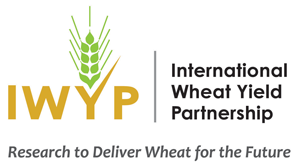
How Can Wheat Yield Be Improved?
There are many ways we can increase wheat yields in farmers’ fields. The focus of the International Wheat Yield Partnership’s (IWYP) funding will be directed towards increasing the genetic component of yield potential of wheat in environments all over the world.
At the fundamental level this will be achieved by improving wheat’s ability to capture and process the sun’s energy, through photosynthesis, and making sure that the captured carbon ends up in the wheat grain.
For example, wheat uses only about 1 percent of sunlight to produce the parts that we eat, compared to maize’s 4 percent efficiency and sugarcane’s 8 percent efficiency. Even increasing wheat’s photosynthetic efficiency from 1 percent to 1.5 percent would allow farmers to increase their yields on the same amount of land, using no more water, fertilizer or other inputs.
To deliver increased wheat yield, a combination of fundamental bioscience and applied research will be needed. IWYP will deliver this through a focused program of research to develop new knowledge, models and wheat lines suited to multiple environments ensuring global gains in wheat yields are achieved.
IWYP will target six key research scope areas:
- Uncovering genetic variation that creates the differences in carbon fixation and partitioning between wheat lines
- Harnessing genes from wheat and other species through genetic modification to boost carbon capture and fixation to increase biomass production
- Optimizing wheat development and growth to improve grain yields and harvest index
- Developing elite wheat lines for use in other breeding programs
- Building on discoveries in wheat relatives and other species
- Fostering breakthrough technology development that can transform wheat breeding
